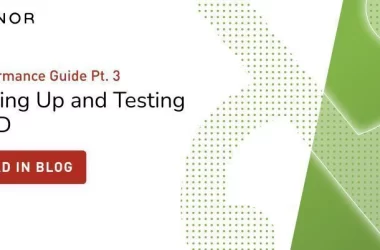Pay-Per-Click (PPC) advertising has become one of the most effective and widely used online marketing models for businesses of all sizes. Whether you are a small brand looking to attract local customers or a large company aiming to scale globally, PPC gives you immediate visibility, measurable results, and complete control over your advertising spend. To use PPC effectively, you must understand how it works, what factors influence performance, and how to optimize your campaigns for better results. This guide breaks down the basics of PPC advertising in a clear and practical way.
What Is PPC Advertising?
PPC stands for Pay-Per-Click, a digital advertising model where advertisers pay only when someone clicks on their ad. Instead of paying for impressions or visibility, you pay for real engagement. This makes PPC a cost-efficient strategy because you spend money only when a user takes action.
Platforms like Google Ads, Meta Ads, Bing Ads, LinkedIn Ads, and YouTube Ads are built on PPC models. Google Ads is the most popular one because it allows brands to appear in search results the moment a user is looking for something relevant.
For example, if you run a bakery and someone searches “best cupcakes near me,” PPC ads allow your business to appear instantly—above organic results.
How PPC Works
While the PPC concept is simple, the process behind it is smart and algorithm-driven. Every time a user types a search query, an auction takes place. But it’s not based on who pays the highest amount. Instead, platforms decide winners using multiple factors:
- Bid Amount – How much you are willing to pay per click.
- Quality Score / Ad Relevance – How useful and relevant your ad is to the user.
- Expected Click-Through Rate (CTR) – How likely your ad is to be clicked.
- Landing Page Experience – How user-friendly and valuable your webpage is.
A great PPC campaign balances all of these elements.
Types of PPC Advertising
PPC is not limited to search ads. Different ad formats serve different business goals:
1. Search Ads
These appear on search engines like Google and Bing. They target people actively searching for solutions, making them high-intent users. Search ads are ideal for lead generation, service businesses, and local brands.
2. Display Ads
Display ads appear on websites, apps, and YouTube. They are visual banners aimed at increasing brand awareness and retargeting previous visitors. They help keep your brand top-of-mind.
3. Social Media PPC Ads
Platforms like Meta, Instagram, LinkedIn, and Twitter use PPC models to show ads based on audience interest. These ads are best for brand awareness, product promotion, and retargeting.
4. Shopping Ads
Google Shopping Ads show product images, prices, and store names directly in search results. They work exceptionally well for e-commerce stores.
5. Video Ads
YouTube video ads are also PPC-based. You pay when someone watches or interacts with your video. These are great for storytelling, branding, and product education.
Benefits of PPC Advertising
PPC is popular because it delivers fast, measurable, and scalable results. Here are the key advantages:
1. Immediate Visibility
Unlike SEO, which can take months, PPC gets your business in front of customers instantly. This is especially useful during product launches, seasonal campaigns, or heavy competition.
2. Full Control Over Budget
You decide how much you spend per click, per day, or per campaign. PPC platforms allow you to increase, decrease, or stop spending anytime.
3. Measurable Results
Every click, impression, and conversion can be tracked. You know exactly where your money is going, making it easier to calculate Return on Ad Spend (ROAS).
4. Advanced Targeting
PPC allows you to target users based on keywords, interests, location, age, device type, and even behavior. This means your ads reach only the right audience.
5. Scalable and Flexible
Want to reach more customers? Increase your budget or target new keywords. Need to pause ads during slow business days? You can do it instantly.
Key Metrics in PPC Advertising
Understanding metrics is essential to monitor and improve campaign performance. Here are the most important ones:
1. CTR (Click-Through Rate)
The percentage of people who clicked your ad after seeing it. High CTR means your ad is relevant.
2. CPC (Cost Per Click)
How much you pay for each click. Lower CPC means more efficient spending.
3. Quality Score
A score given by Google based on ad relevance, keywords, and landing page experience. Higher scores reduce your cost per click.
4. Conversion Rate
The percentage of users who complete a desired action (purchase, sign-up, enquiry) after clicking the ad.
5. ROAS (Return on Ad Spend)
How much revenue you earn for every rupee spent on ads. Higher ROAS indicates a profitable campaign.
How to Run a Strong PPC Campaign
To get the best results from PPC, follow these foundational steps:
1. Choose the Right Keywords
Keywords determine when your ads appear. Use tools like Google Keyword Planner to find low-competition, high-intent keywords. Long-tail keywords often give cheaper and better conversions.
2. Write Compelling Ad Copy
Your ad copy must be relevant, clear, and action-driven. Include keywords, highlight your unique selling points, and add a strong call-to-action.
3. Optimize Your Landing Page
Your landing page should load fast, be mobile friendly, and match your ad message. A poor landing page can destroy even the best PPC campaign.
4. Set Budget and Bidding Strategy
Start with a moderate budget, analyze performance, and adjust your bidding strategy based on goals—whether you want clicks, conversions, or impressions.
5. Track and Analyze
Use tools like Google Analytics 4 (GA4) and Google Ads Dashboard to track conversions, user behavior, and ROI. Continuous monitoring helps you refine your targeting and optimize your ads.
** Why PPC Is Essential in Today’s Digital World**
Consumers are online 24/7, and competition is growing every day. PPC ensures your brand appears at the exact moment users need your product or service. It builds visibility, drives sales, and provides insights that help shape your overall marketing strategy.
When combined with strong branding, high-quality content, and optimized landing pages, PPC becomes a powerful engine for business growth.


